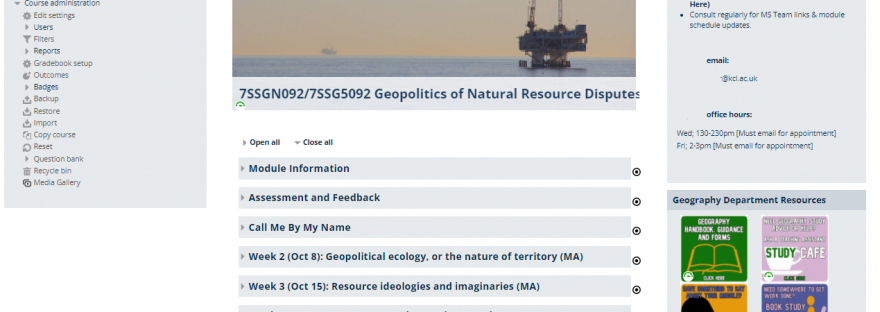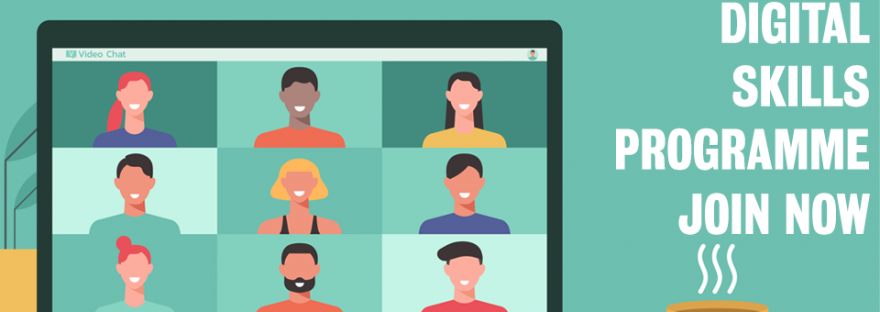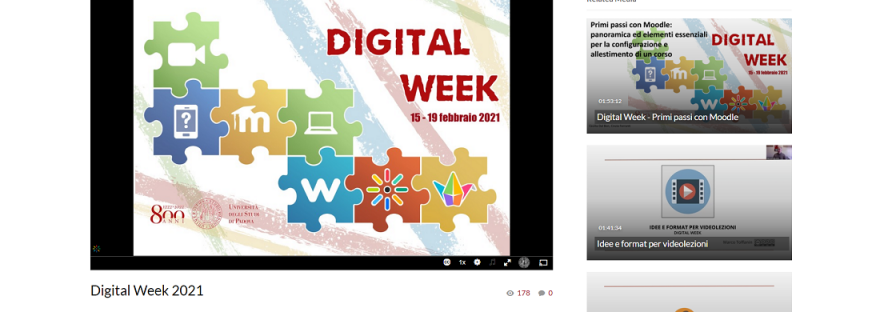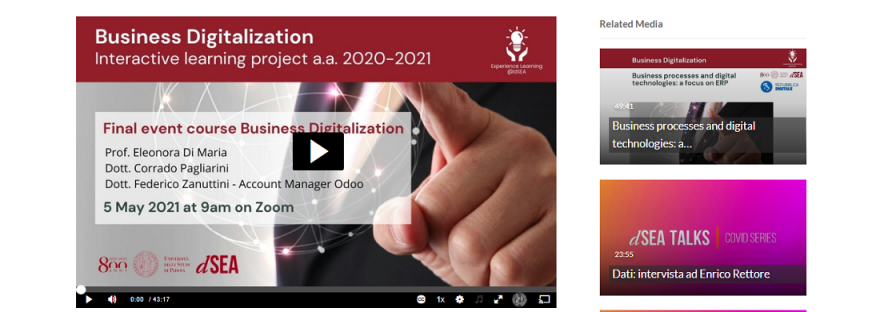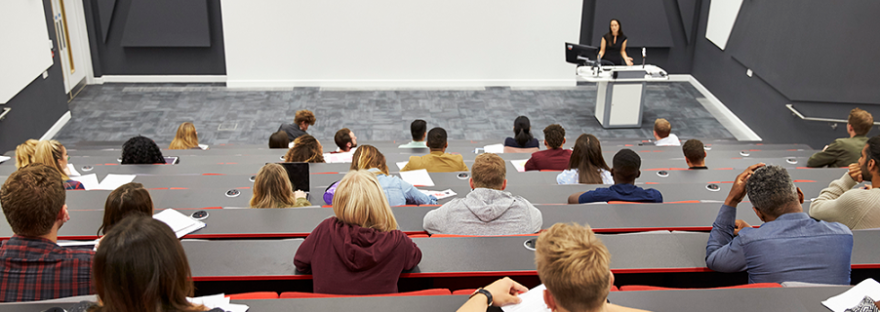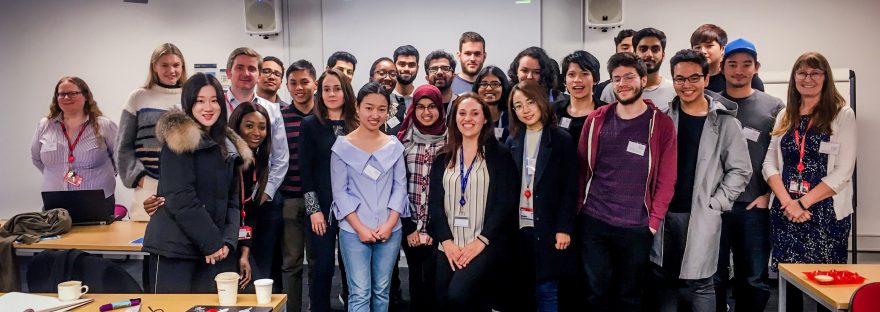In September 2020, Blackboard Ally was successfully launched university-wide to support improvements in accessibility in KEATS (Moodle). Continue reading “Improving KEATS Accessibility with Blackboard Ally”
Tag: digital education
Credit Harmonisation at King’s College: Case Study at the Faculty of Social Science and Public Policy
The majority of modules in King’s College use the 30/60 credit split. This structure was introduced over 15 years ago for undergraduate modules to replace the “course unit” model. However not all postgraduate modules were also moved to this new structure, meaning there were different credit values assigned to different modules at PG level. Continue reading “Credit Harmonisation at King’s College: Case Study at the Faculty of Social Science and Public Policy”
Preparing students for success in the digital world- The process of creating the Essential Digital Skills Programme
Digital competence and confidence are thought to be critical for success in higher education. However, despite a significant proportion of learning being online and evidence to counter the idea of digital nativity, these critical skills are often not explicitly taught at university. The COVID-19 pandemic outlined why it is so important for students to have the digital capabilities required to thrive in their academic, personal and professional lives. This blog reflects on the process King’s College London went through to create the Essential Digital Skills programme. Continue reading “Preparing students for success in the digital world- The process of creating the Essential Digital Skills Programme”
Part 2: Kaltura at the University of Padua
This article has been divided in two parts. Part 1 discusses the background and training required for implementing Kaltura, as well as the reasons and methods for using it. Part 2 discusses the benefits of having a university video platform and strategies for student engagement. Continue reading “Part 2: Kaltura at the University of Padua”
Part 1: Kaltura at the University of Padua
This article has been divided in two parts. Part 1 discusses the background and training required for implementing Kaltura, as well as the reasons and methods for using it. Part 2 discusses the benefits of having a university video platform and strategies for student engagement. Continue reading “Part 1: Kaltura at the University of Padua”
HyFlex physiology practicals during lockdown
The Covid-19 pandemic has highlighted the need for new flexible approaches to teaching and learning to ensure excellent student experience. One aspect of both undergraduate and postgraduate teaching in physiology, that has been most affected, is the delivery of practical classes and skills teaching. This experiential mode of teaching is invaluable in supporting the taught, theoretical component of Bioscience education.
HyFlex teaching environments allow a combination of in-person and remote delivery ensuring no student is disadvantaged in terms of learning experience if they are unable to attend taught classes in person. It also allows such teaching to be recorded for upload and later reviewed by students to support learning. There are limited HyFlex teaching high spaces available across the College which are currently restricted to classroom spaces. We believe that greater availability is required to facilitate practical and laboratory skills training.
Whilst we had already recorded high quality videos of all the practical classes for our MSc course, in preparation of online delivery we were aware that this mode of education works best with supplementing a hands-on experience. Therefore, we sought a way for the students to gain some experience in the essential laboratory skills needed for understanding of the key mechanisms underpinning our teaching as well as providing skills training in techniques they would require in later modules on the MSc and in their research project.
During semester 1 in the current academic year (October 2020), we successfully ran 8 HyFlex teaching sessions in our teaching laboratories in the Centre for Human Applied Physiology (Shepherds House, Guys Campus).


Figure 1 A) The Lab setup for a cardiovascular practical class showing camera, equipment, and screens. B) the class in action with a tutor demonstrating equipment and skills with live feed streaming over Teams.
We used commercially available low-cost portable equipment (owned by the authors) open-source software (Open Broadcast Software, OBS) to create a bespoke HyFlex teaching environment in one of our teaching labs following a full risk assessment.
As shown in Figure 2, i) two webcams (one for a wide-angle camera and one, mobile camera, for images of equipment and participants); ii) a radio microphone to ensure clear audio on both the recording and live stream and, iii) a PC laptop to run the software required for the experiment being undertaken and for video and audio mixing and broadcast were used.

Figure 2: Setup of equipment using standard office supplies, open-source software, and staff-owned equipment.
All the sessions were recorded and uploaded to KEATS for revision purposes.
This approach was used for our module 7BBLM004, Cardiovascular and Respiratory Physiology, which forms a core part of the MSc in Human and Applied Physiology.
Due to social distancing and limits on room capacity we repeated each practical on 4 occasions during each day of teaching, with several students joining for both their in-person session as well as the remote HyFlex session at a different time point in the day.
The students were incredibly supportive and grateful for the opportunity to receive some practical teaching, particularly as some were unable to join the in person practical classes. Feedback from the students confirmed that the classes were beneficial and that the participants felt safe while on campus and in the classes (Figure 3).

Figure 3 – Feedback from students following the HyFlex practical sessions.
We believe this approach offered enhanced participation to on-campus activities by those students who cannot attend in person for courses and modules which have a significant laboratory practical component.
Written by Dr James Clark & Dr Ged Rafferty
 Dr James Clark is a Reader in Human & Applied Physiology and Education Lead for the School of Cardiovascular Medicine andSciences. He currently runs the Human & Applied Physiology MSc. James supports a blended approach to education in HE and has been the recipient of a King’s award for innovative teaching (2017) as well as the Physiological Society Otto Hutter Prize for Excellence in Physiology Education (2019).
Dr James Clark is a Reader in Human & Applied Physiology and Education Lead for the School of Cardiovascular Medicine andSciences. He currently runs the Human & Applied Physiology MSc. James supports a blended approach to education in HE and has been the recipient of a King’s award for innovative teaching (2017) as well as the Physiological Society Otto Hutter Prize for Excellence in Physiology Education (2019).
 Dr Ged Rafferty is a Reader in Human & Translational Physiology in the Centre for Human and Applied Physiological Sciences He is currently the lead for 7BBLM004 Cardiovascular and Respiratory Physiology and will assume the lead for the MSc in Human & Applied Physiology in 2021-22. Ged is an advocate for experiential learning and the benefits of practical teaching in human physiology.
Dr Ged Rafferty is a Reader in Human & Translational Physiology in the Centre for Human and Applied Physiological Sciences He is currently the lead for 7BBLM004 Cardiovascular and Respiratory Physiology and will assume the lead for the MSc in Human & Applied Physiology in 2021-22. Ged is an advocate for experiential learning and the benefits of practical teaching in human physiology.
ReFlexions on HyFlex
In 2020 we used HyFlex technology in our Research Skills in Pharmacology workshops to recreate the interactivity of class discussions. It allowed students in the classroom to interact with students thousands of miles away, but couldn’t fully recapture the dynamics of small group discussions with everyone in the same place. Continue reading “ReFlexions on HyFlex”
Using student media assignments
In her chapter in the recently published book ‘Languages at work, competent multilinguals and the pedagogical challenges of COVID-19’, Cecilia Goria describes the positive response of staff to the enforced move to teaching online due to the pandemic. This phase was described as Emergency Remote Teaching (ERT) – the quick unplanned response to the lockdown. Hodges et al. (2020) describe the speed with which this move to online instruction happened is ‘unprecedented’ and ‘staggering’. Continue reading “Using student media assignments”
Tutorials for Educators
In March 2020 we found ourselves needing to transition to online education as a primary means of delivering our teaching at King’s. Whilst using online resources for teaching was not new to us (we have, after all, been using Keats, Blackboard and Lecture Capture for many years to support education) it was a challenge for many of us to become accustomed to the new way of preparing and delivering education to our students. Hundreds of academics at King’s had to adapt to using Teams, chunking their lectures and uploading material in new formats to Keats; and this is even before we have to consider developing an online curriculum. Continue reading “Tutorials for Educators”
From Conception to Completion: The Digital Education Student Committee
I recall leaving University in 2010 and being faced with nearly one year of unemployment. The fact I had a good 2:1 in BSc Applied Psychology and Sociology and experience on a placement year was clearly not enough, particularly as I graduated soon after the global financial crash. After meeting numerous recruitment agencies, sending my CV’s to what felt like hundreds of companies and applying to various jobs, I finally realised that I did not know how to properly complete application forms, and I did not have enough recent work experience for my CV to make an impact. I was one of many recent graduates that just could not get to the interview stage of a job, yet alone a job. What made my experience slightly more frustrating was that many of my friends who chose to go straight to work, rather than to Universities, were in greater demand than I was. What set us apart, was that they had gained a few more years working experience, and they knew how to sell themselves to potential employers. Continue reading “From Conception to Completion: The Digital Education Student Committee”

